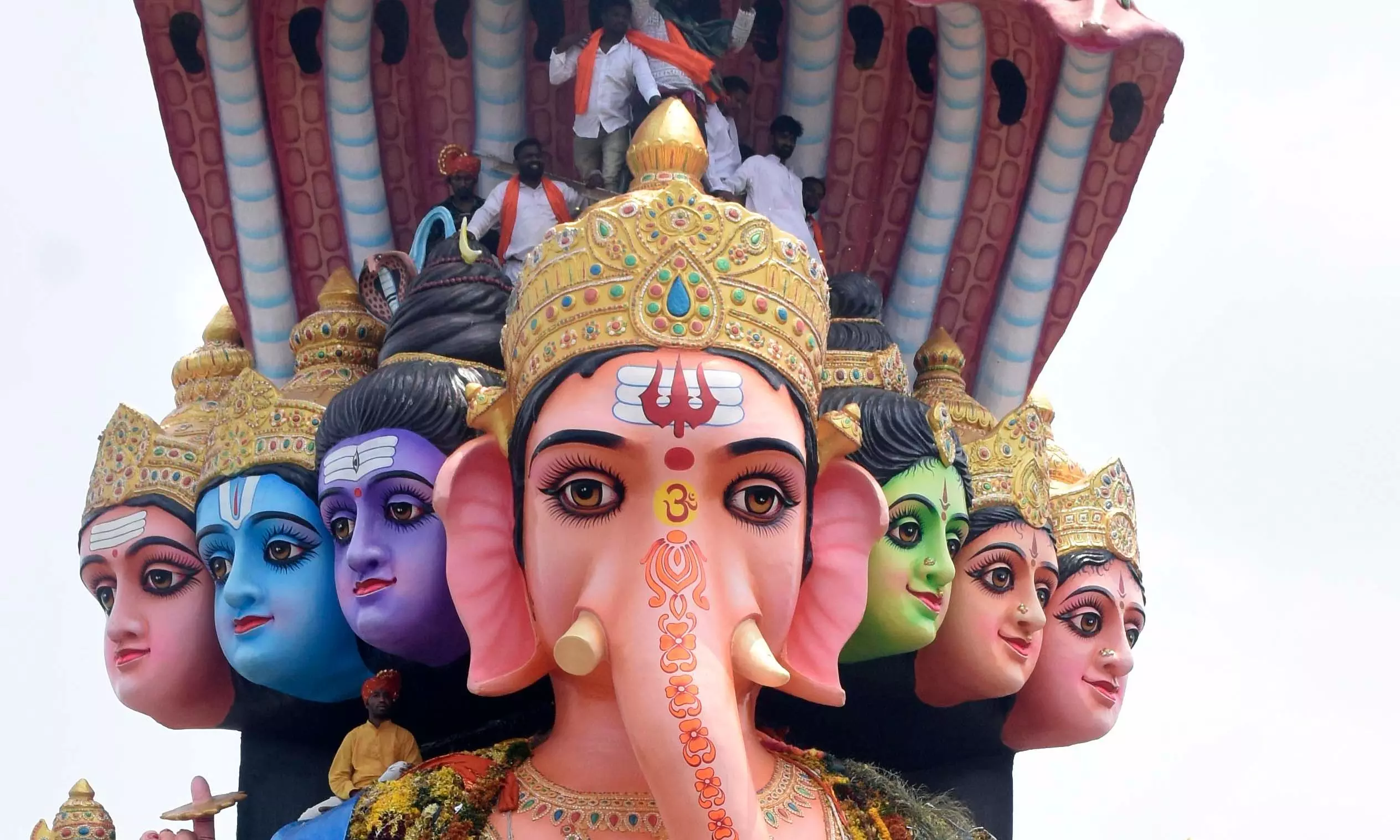Ganesha Puja: Different Regions Had Different Ways

HYDERABAD: Vinayaka Chavithi, or Ganesha Chaturthi, has evolved significantly. As documented in the ‘Census of India, Fairs and Festivals of Hyderabad District, 1961’, the festival was celebrated for only three days in Medchal, from Bhadrapada Shudda Chavithi to Shashti (August-September). The festival involved a Chavithi celebration, a rathothsavam (procession) on Panchami, and Santharpana (community feeding) on Shashti.
In Hyderabad, it was a bigger affair as compared to other districts. The festival lasted nine days, culminating in a grand procession and the immersion of Lord Ganesha's idol in local waterbodies. Particularly in the twin cities, the Maharashtrian community celebrated Ganapati Navaratri with idols of various sizes, some as tall as 10 feet.
In Nalgonda, families worshipped a clay idol of Lord Ganesha at home, offering special dishes like undrallu and kudumulu. A custom involved viewing at least five Ganesha idols. On a suitable day, the idol was taken to a well for worship and immersion.
In contrast to Medchal's three-day-long celebrations, Ganesha Chaturthi lasted 11 to 21 days in Nizamabad. ‘Kamareddy Ganapathi Utsavam’ was particularly famous, drawing thousands for the immersion procession. Instead of reciting the Satrajit story to counter the ill-effects of seeing the moon on Vinayaka Chavithi, there was a tradition of eating ‘pelalu (puffed cholum)’ prepared during Nagula Panchami and preserved for this day. Evenings were filled with harikathas and recitals of the Samanthakamani story. All idols were invariably made of clay.
“When I was seven, I had my own personal clay Ganesha. On Nimajjanam day, I would walk from home to a nearby lake in Bholakpur. After that, I’d rush to my grandmother’s house to join the puja, procession, and immersion all over again,” said Anuradha Reddy, convener of Intach-Hyderabad. “Back then, we didn’t have large, centralised processions like today. The Ganesha Utsav was more focused on families and local communities.”
Today, while these traditions remain, the scale of celebrations, and the size of idols, has grown significantly.
“As a child, the ten-day festival was a source of excitement. We’d play games, like seeing who could find the most Ganeshas in our colony. It was our tradition to go with my dad to admire the different Ganeshas across the city,” said Hanisha K., a first-year MA Geography student at Osmania University. "Today they have Ganesha with robotic arms handing out prasad to devotees!" she added.
The experience reigns in anew for the younger generation who are observing the Khairatabad Ganesha, first installed in 1954, for the first time. It’s height has since grown one foot every year, only to be stopped in 2014 due to environmental concerns and resumed in 2019t. Pravalika, a 10-year-old from Kompally, was wide-eyed to see the Khairatabad Ganesha being immersed in Hussainsagar. "I have never seen anything so huge in my entire life!" she exclaimed.

